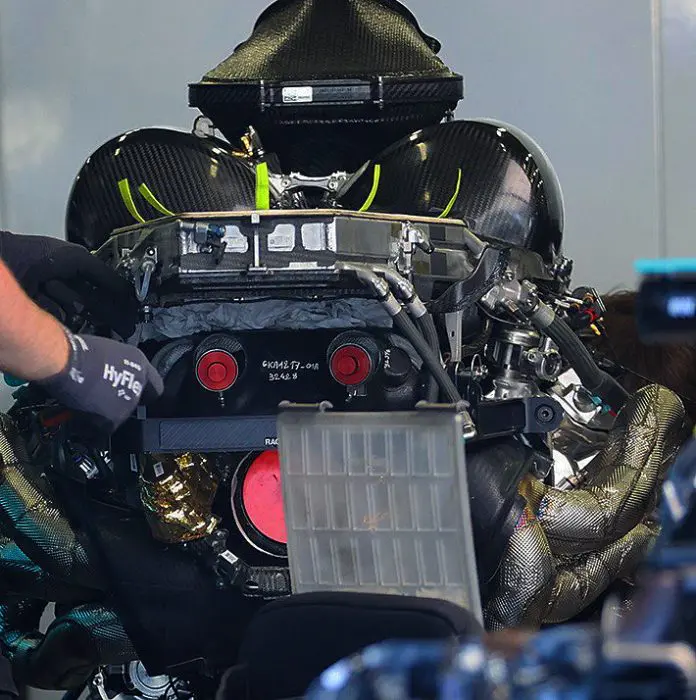The F1 summer break is almost over. In seven days it will be press-conference time for the drivers at Spa Francorchamps, and the Red Bull–Mercedes fight will actually resume tomorrow, after an exciting and very tense first part of the season. Two similar cars in terms of performance balance things out in a very hard-fought championship but at the same time it is wort pointing out that it’s a surprising to see such different philosophies between the W12 and RB16B.
The creature born in the Brackley factory was born using the concept of low rake. It is a long wheelbase car that tends to be more parallel to the ground. The aim is to maximize aerodynamic efficiency for the benefit of performance, especially in the fast corners that are the hunting ground for Hamilton and Bottas.
Conversely, the car designed by Adrian Newey’s was born around a concept by now consolidated at Milton Keynes: the high angle that the diffuser creates with the asphalt line combined with a more compact wheelbase. The idea is to enhance the vertical thrust and mechanical traction, the real strong point of a car that at times seemed flawless.
Two dichotomous philosophies that, however, did not allow either team to have the upper hand on the other. This proves that you can reach the peak in technical efficiency without following the same path. It’s not just the aerodynamic approaches that are different, there is something less visible that marks the gap between Red Bull and Mercedes. It is actually the beating heart of an F1 car: the power unit.
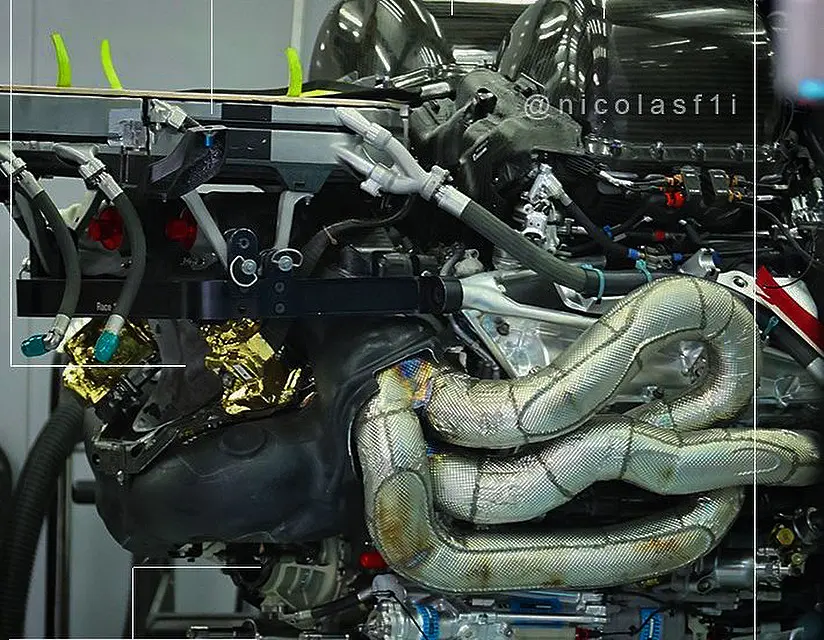
Winning a world championship means finding the right alchemy between different elements. Obviously, you need a competitive car. It is necessary to have five-star drivers. You need to have a smart, diligent pit wall that knows how to strategically read the races. And you need to make use of a team of technicians who know how to develop the car over the course of the championship. This aspect in F1 always makes the difference. And 2021 proves it.
In a context of regulatory rigidity, developing a single-seater becomes more difficult. There are so many limitations – including financial ones – that hinder the creative impulses of the specialists, but the engineers of the pinnacle of motorsport are brave and try by all possible means to bypass any limitations. This basically happened on the PU front, where the fight between Mercedes and Honda is on fire.
The fight between the two manufacturers has been escalating. If at the beginning of the year the Mercedes power unit seemed to still be ahead, albeit slightly, the upgrade brought by Honda in France outdid the competition. But AMG did not remain idle and responded point by point to the offense, unlocking a fair amount of power between Silverstone and Hungary. But let’s see from which bases the two power units started, what are the distinctive features of each of the two V6 turbo-hybrids. Let’s start with Sakura’s challengers.
F1-Honda vs Mercedes analysis: RA620H’s features
First of all, it must be said that the resounding decision of the Japanese company to abandon F1 is at the basis of the sudden increase in the performance of the RB and Alpha Tauri V6. The RA620H, this is the name of the engine, was to be mounted on the new generation cars whose debut was postponed from 2021 to the following year. Then Honda decided to give up, which led to the dismissal of the PU which was however averted by the persuasive skills of Yasuaki Asaki, the director of Honda Reserch and Development based in Sakura.
The engineer convinced the top management to introduce the new project which had to adapt to the aerodynamics of the “old generation” single-seaters. The engine in question, compared to the 2020 version, has undergone significant changes to take it to a higher level. The first tangible change is given by the overall dimensions of the V6: the power unit has been miniaturized thanks to the interventions carried out on the cylinder head.
The camshaft has been made smaller and lowered to shorten the distance between the cylinders and change the angle of the valves. The aim was to change the shape of the combustion chamber, thus reducing the overall dimensions of the engine and at the same time lowering its center of gravity.
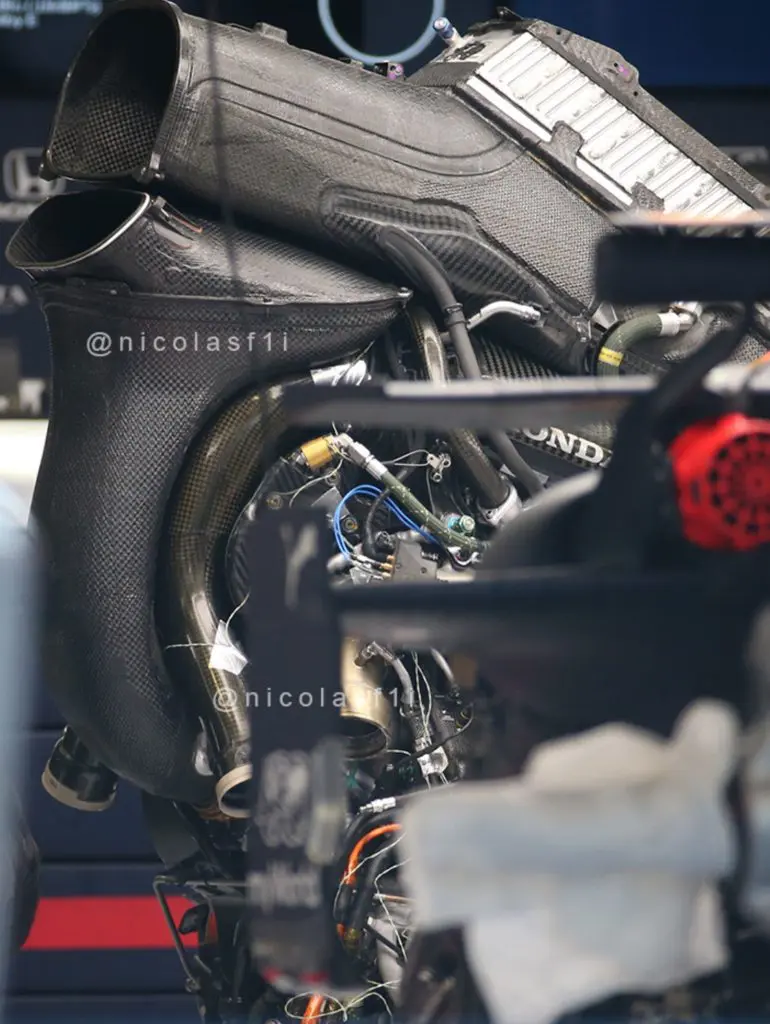
Work was also done on materials. For the monobloc, new metal alloys have been introduced which have further reduced the space between the cylinders. Honda successfully created a very compact package by simultaneously increasing power and usability at different revs.
But that’s not all. The turbine and compressor have also been subject to a conceptual review to try and enhance the function of the MGU-H, which is the system that converts the heat of the exhaust gases into electricity. Furthermore, in order to increase the reliability of the internal combustion engine, Honda has started using the plating on the cylinder block.
F1- Honda vs Mercedes analysis: the features of the M12
The power unit has always been the cornerstone of Mercedes‘ domination. Their 2021 PU (the M12E project) has undergone several changes. In addition to the work carried out on the combustion chamber aimed at increasing thermal efficiency also thanks to the use of new alloys, the Brixworth engineers have managed to unlock some potential on the hybrid part. It all stems from the problems related to reliability that during the past season forced the pilots to an often conservative approach, necessary to save the engine and other related components.
Since winter testing, various mappings have been tested, with the clear objective of testing the quality of the work carried out throughout 2020. According to information collected by Formula Uno Analisi Tecnica it has been possible to verify that Mercedes’ PU can count on of an important plus for the 2021 season. We are talking about twenty more hp available, which are useful in qualifying but equally useful in the race ,where -unlike in 2020- the German power unit should be able to use more power for a higher lap percentage.
The most exhausting work for Brixworth’s engineers has been confined to a specific area. The 2021 power unit has undergone a major work of remodeling the conformation of the plenum camera, where the pressure wave collides inside the manifold following the closure of the intake valve and where subsequently rebounds again towards the combustion chamber.
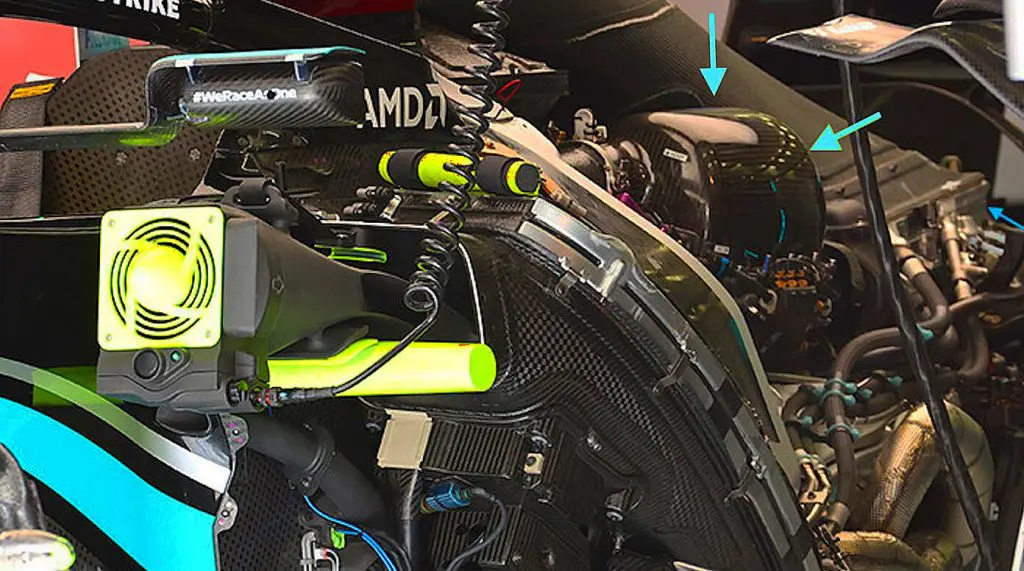
This phenomenon helps the intake system to introduce more air, which enriches the blend by generating a supercharging effect. In the intentions of the technicians led by Hywel Thomas, the new plenum camera of the German F1 team was to be the expedient that would guarantee greater efficiency to the engine. But something, in the first phase of the championship, did not go as they expected at Brixworth. Observing the on board of the W12, since Bahrain, it was noticed an anomalous behavior of the engine on the straights.
Basically, the V6 was clipping. According to technical regulations, the power unit can use the MGU-K electric motor by spending no more than 4 MJ of energy for each lap. Considering that the maximum power that the standards allow for the MGU-K is 120 kW (160CV), we can estimate that the use at maximum power of the electrical component is about 33 seconds per revolution. Obviously each team has different electronic calibrations to distribute these 4MJ or 33s in the best moments.
In Brixworth they worked on this and apparently solved the puzzle, also thanks to the cooling. Mercedes AMG F1 could cool the plenum at certain stages, in order to have more power available. That is actually allowed when the car isn’t moving stationary, as we observe the mechanics apply dry ice near the air intakes of the power unit. The situation is different during qualifying or during the race, given that the regulation prohibits refrigerating the air that enters the power unit manifold.
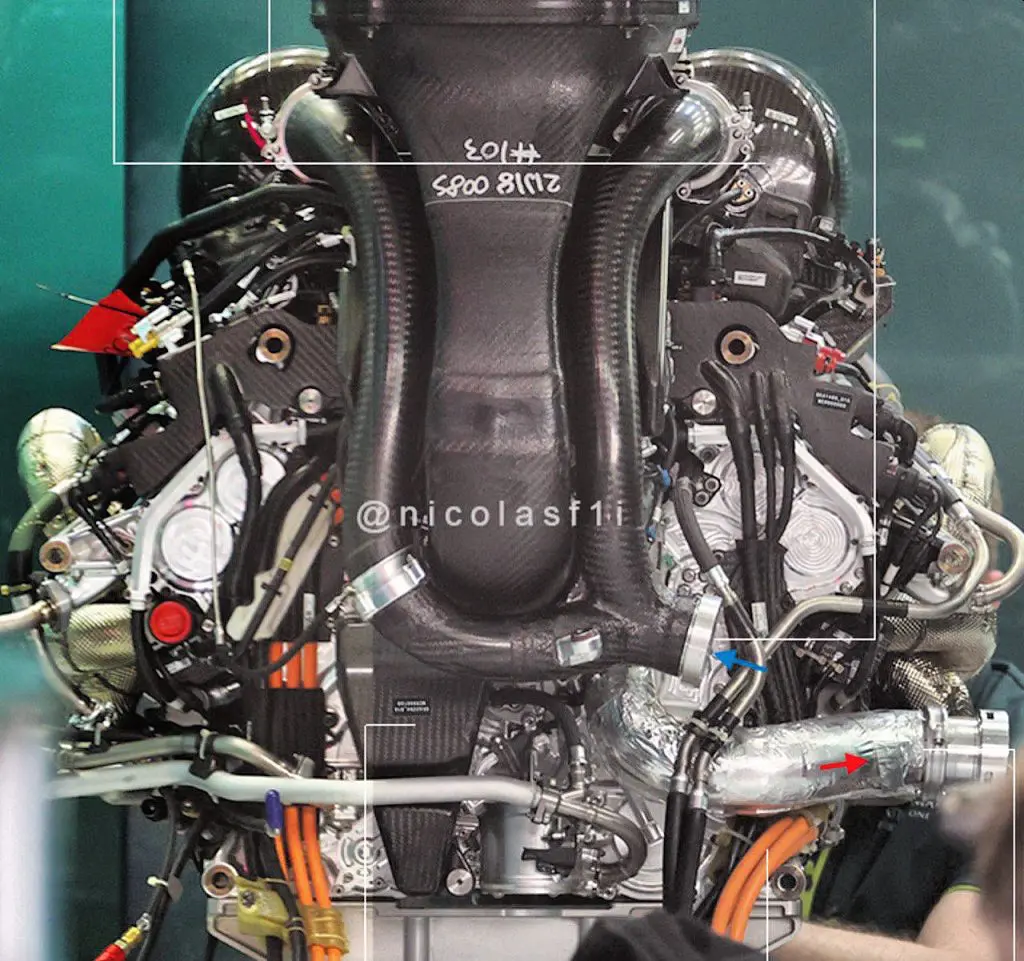
Cooling is one of the winning elements of the German PU: supercooling is the process by which a liquid can be cooled below its nominal freezing temperature without switching to a solid state. It is therefore believed that super-cooled coolant flows into the walls of the Mercedes engine, making the air inside even cooler. The colder the air, the higher the oxygen content and the more explosive the mixture will be.
The variable-length intake ducts assist this process. They are standard on all F1 engines in any case and they have the purpose of optimizing the volume of incoming air, based on the load and torque required. These instruments have been made more compact on the M12E thanks to an ingenious snail-shell geometry. These are the characteristics on which the two units that are making a difference on the opponents are based. There is more than one fact that explains why Renault and Ferrari are struggling against the duo being analyzed.
The technical challenge between Honda and Mercedes actually had two key moments. The first occurred in France when the Japanese manufacturer brought the second spec, which allowed Red Bull to harness more power. Honda fixed some small issues on the reliability front and this had very significant effects on the performance of the RB16B which won at Paul Ricard and dominated in the two Austrian rounds.
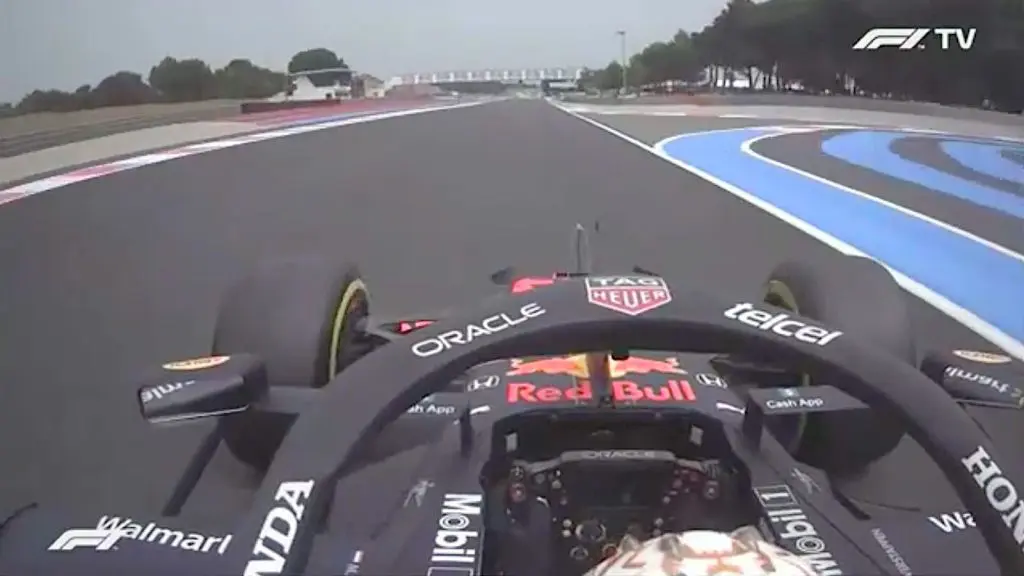
Mercedes did not rest and replicated their success in Great Britain and Hungary thanks to the increased power we told you about in an exclusive insight that emerged from the analysis of Lewis Hamilton’s on board (read more here). In analyzing the camera cars and radio teams of Brackley’s cars, it emerged that the most thorough mapping of the endothermic component used during all the races held up to Budapest was the “STRAT 5”.
In Hungary, for the first time, Mercedes was able to count on extra power in at least three key moments of the race: in the final phase of the first stint, out of the pits after the second stop and in the hot moments of the battle with Fernando Alonso. This proves that now their powertrain can use more power thanks to the “STRAT 4 ″ mapping, compared to the previous races.
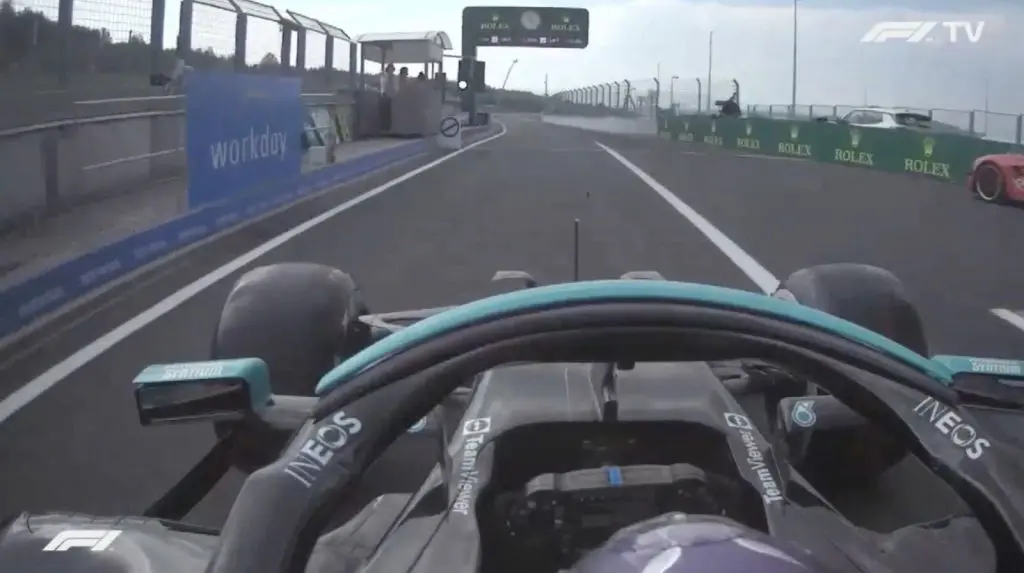
The second half of the season, therefore, will develop taking into account an improved Mercedes and Honda struggling with some difficulties deriving from the need to introduce a fourth engine after the problems that occurred to Perez, at the Hungaroring, and to Verstappen at Silverstone.
The employees down at Brixworth, during the summer break, kept working restlessly. Further developments are expected with the third specification, which could already be mounted at Spa (a very demanding circuit in terms of pure power). Honda, on the other end, is not well disposed to presenting further updates, hence Mercedes could have a small advantage in this exciting war between engineers that has so far characterized the F1 2021 world championship.
Autore: Diego Catalano – @diegocat1977
Translation for: Beatrice Zamuner – @ZamunerB

